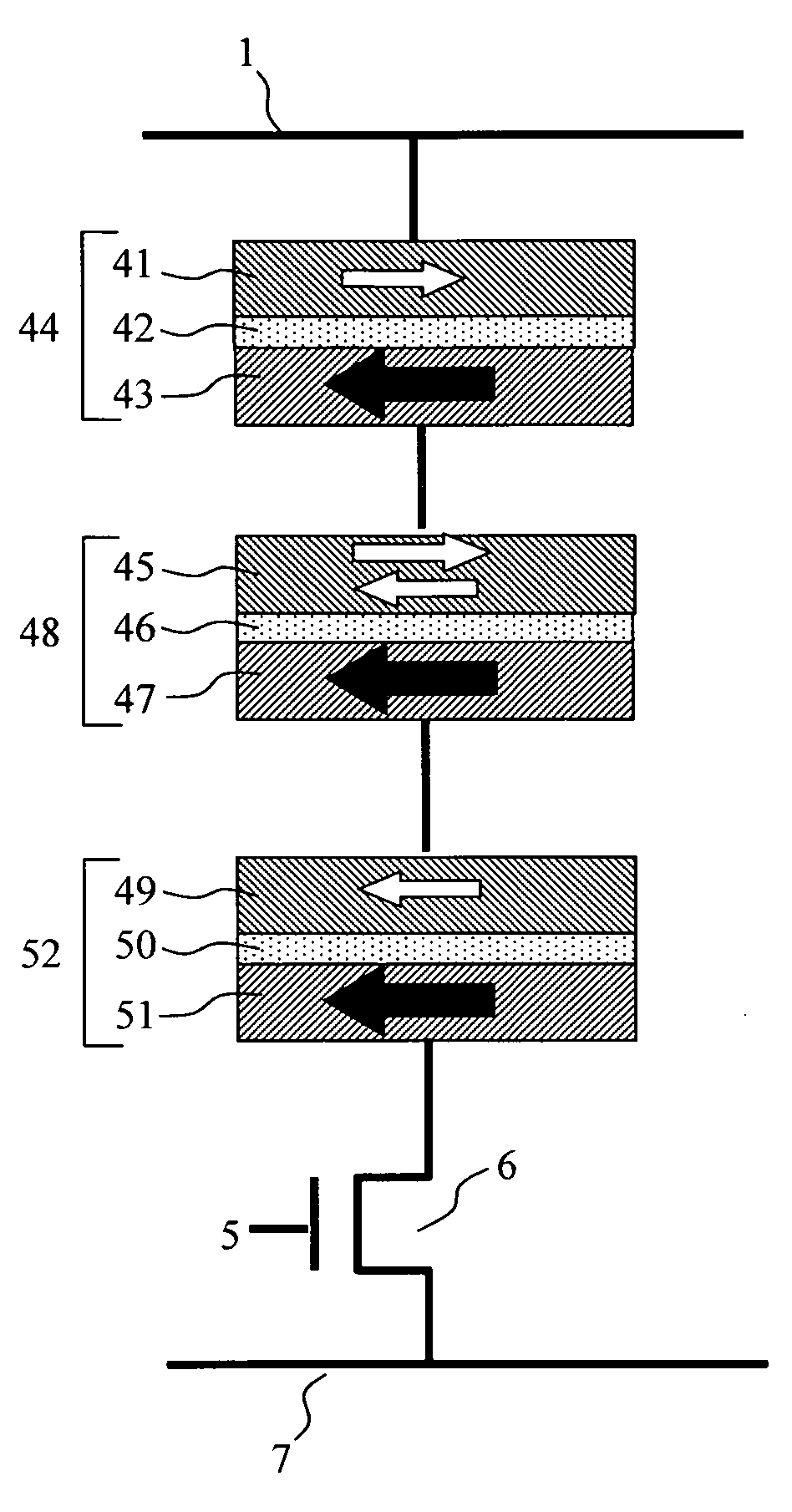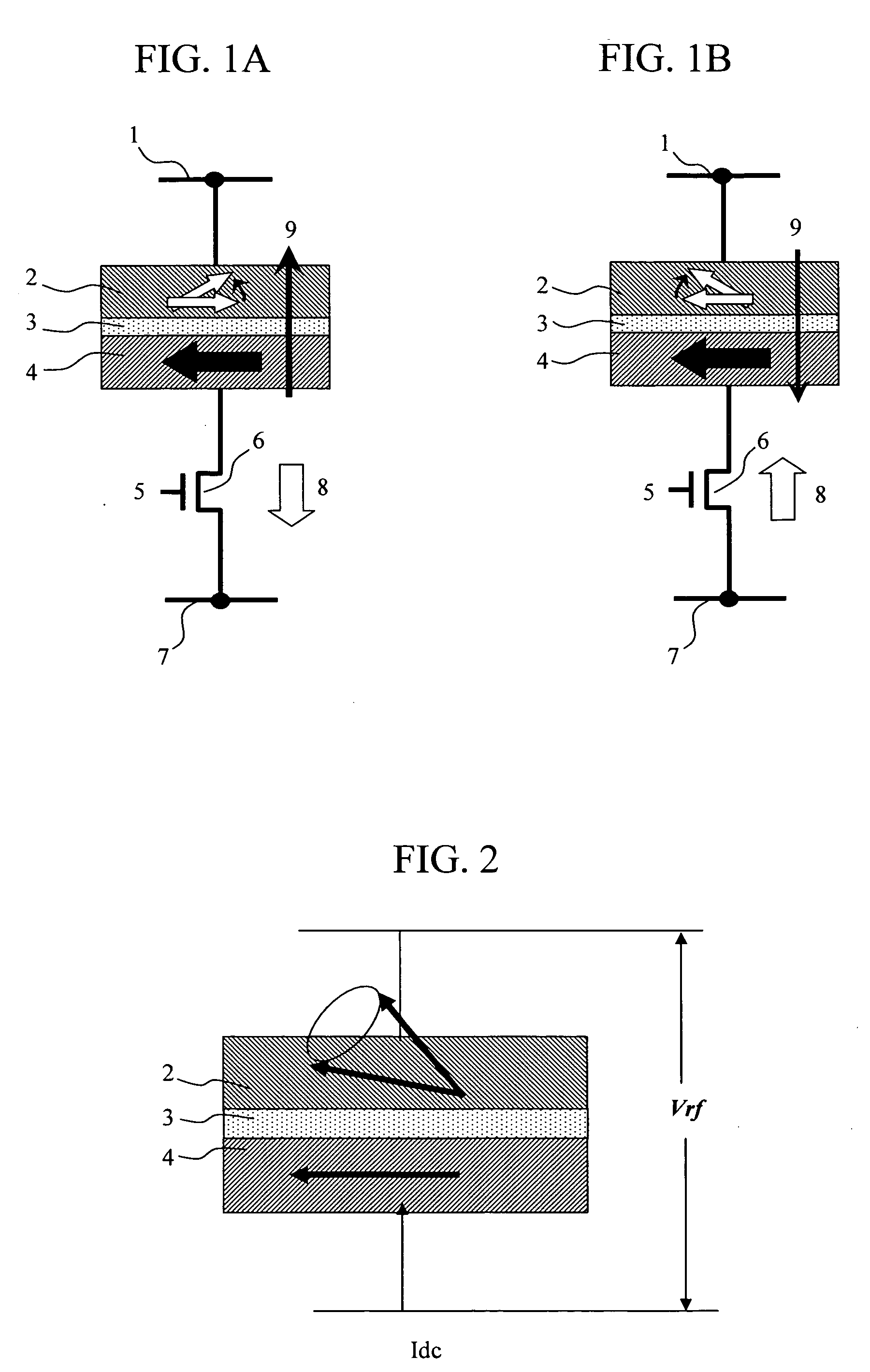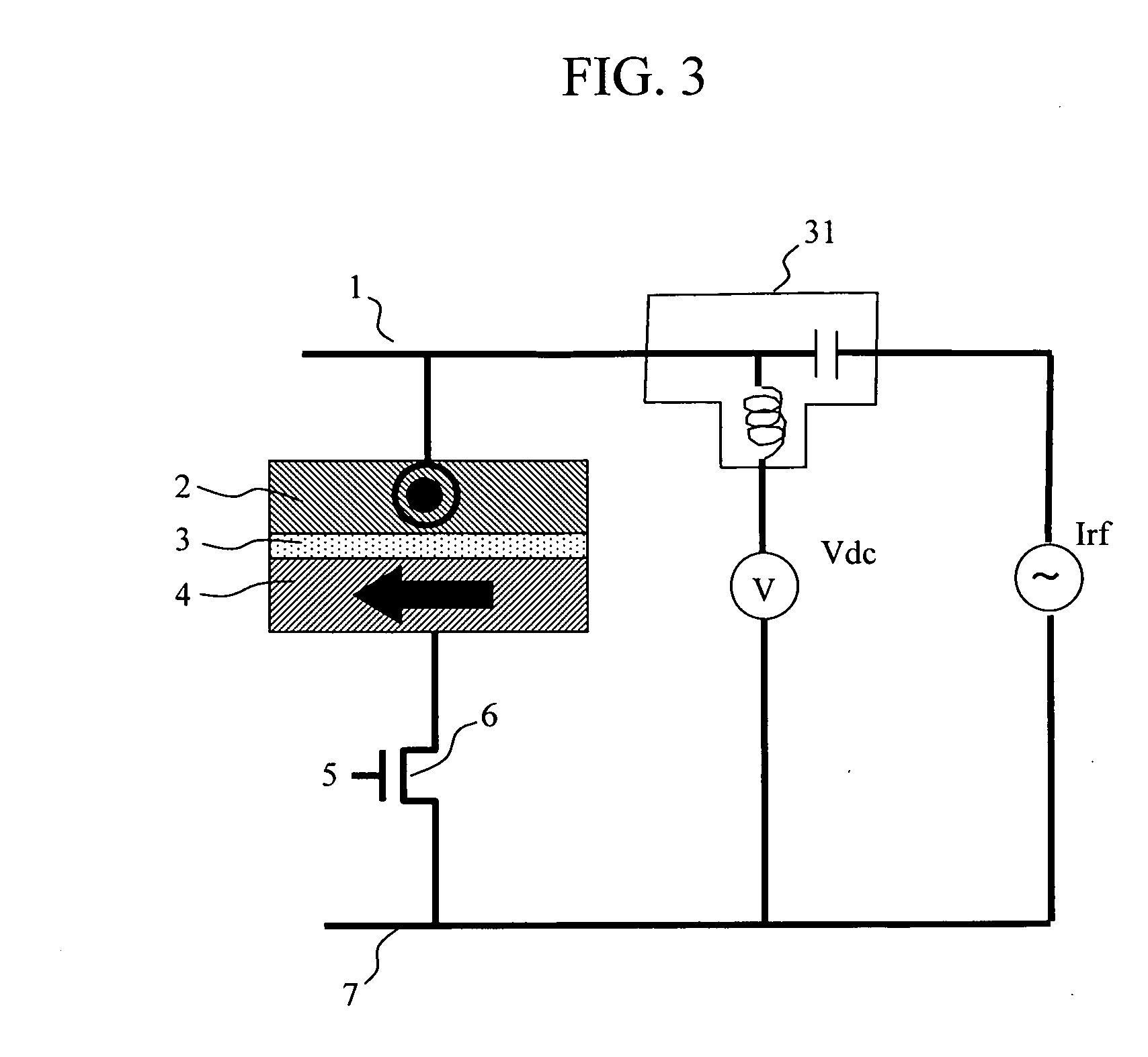Magnetic memory and method for writing to magnetic memory
a magnetic memory and random access technology, applied in information storage, static storage, digital storage, etc., can solve the problems of low cost structure of alternating-current oscillators, difficulty in further reducing this value in the future, and small maximum output of about 1 w, etc., to achieve small write current and low power consumption
- Summary
- Abstract
- Description
- Claims
- Application Information
AI Technical Summary
Benefits of technology
Problems solved by technology
Method used
Image
Examples
example 1
Example in Which All of the Three Magnetoresistance Effect Elements are a TMR Element
[0044]As already described, the TMR element shows a considerably higher resistance change rate than the GMR element, and therefore is suitable for a memory element. Moreover, when used as a spin torque oscillator, the TMR element can obtain considerably higher current amplitude Irf than when the GMR element is used, and therefore this example is one of the most realistic combinations.
[0045]The second TMR element used as a memory element has a film structure of Ta / NiFe / IrMn / CoFe / Ru / CoFeB / MgO / CoFeB / Ru / CoFeB / cap. IrMn is an antiferromagnetic film which fixes magnetization to one direction. CoFe / Ru / CoFeB is a synthetic ferri-fixed layer in which CoFe and CoFeB are exchange-coupled to each other through Ru. MgO is a barrier layer having a film thickness of about 0.9 nm. CoFeB / Ru / CoFeB is a synthetic ferri-free layer in which CoFeB and CoFeB are exchange-coupled to each other through Ru. Using the synthet...
example 2
Example in Which the Second Magnetoresistance Effect Element is a TMR Element and Other Magnetoresistance Effect Elements are GMR Elements
[0050]As already described, the TMR element shows a considerably higher resistance change rate than that of the GMR element, and therefore is suitable for a memory element. Moreover, the GMR element has resistance lower than that of the TMR element, and therefore is suitable for the use when the entire resistance is to be decreased.
[0051]The second TMR element used as a memory element has a film structure of Ta / NiFe / IrMn / CoFe / Ru / CoFeB / MgO / CoFeB / Ru / CoFeB / cap. IrMn is an antiferromagnetic film which fixes magnetization to one direction. CoFe / Ru / CoFeB is a laminated ferri-fixed layer in which CoFe and CoFeB are exchange-coupled to each other through Ru. MgO is a barrier layer having a film thickness of about 0.9 nm. CoFeB / Ru / CoFeB is a laminated ferri-free layer in which CoFeB and CoFeB are exchange-coupled to each other through Ru. Using the laminat...
example 3
Memory Cell Structure
[0055]A specific explanation will be next given of a memory cell structure of the present invention using FIGS. 10A and B. FIG. 10A is a cross-sectional view of the memory cell, and FIG. 10B is a plane view of the memory cell. First, a transistor is formed at a lowermost part of the memory. The transistor controls a current to be made to flow into the magnetoresistance effect elements. Reference numeral 105 is a separation section; 106 and 107 are a drain region and a source region, respectively, of the transistor. The source region 107 is connected to the source line 7 through a metal via 108. Reference numeral 104 is a word line for applying electric field to the transistor. On the other hand, the drain region 106 is connected to a metal 102 to be a base for manufacturing magnetoresistance effect elements through a metal via 103. Three magnetoresistance effect elements are formed on the metal 102 while interposing a metal intermediate film 101 between each set...
PUM
 Login to View More
Login to View More Abstract
Description
Claims
Application Information
 Login to View More
Login to View More - R&D
- Intellectual Property
- Life Sciences
- Materials
- Tech Scout
- Unparalleled Data Quality
- Higher Quality Content
- 60% Fewer Hallucinations
Browse by: Latest US Patents, China's latest patents, Technical Efficacy Thesaurus, Application Domain, Technology Topic, Popular Technical Reports.
© 2025 PatSnap. All rights reserved.Legal|Privacy policy|Modern Slavery Act Transparency Statement|Sitemap|About US| Contact US: help@patsnap.com



